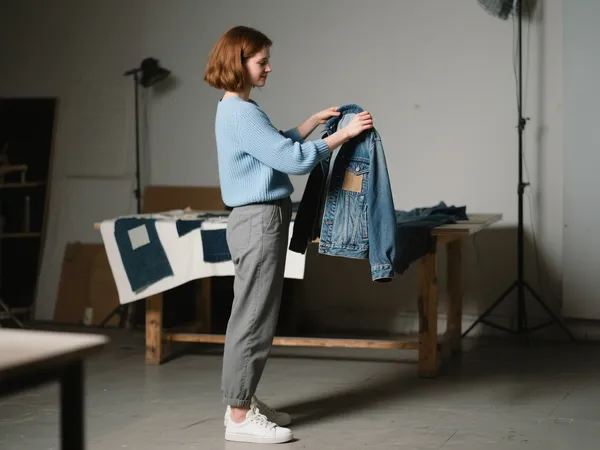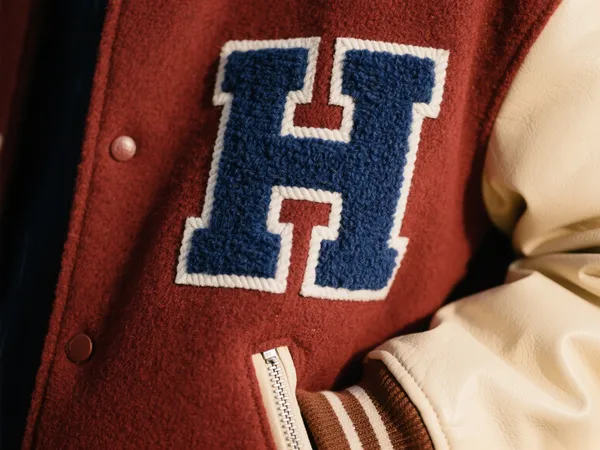Stitch patches are a timeless way to personalize clothing, repair garments, and express creativity. Whether you’re customizing a denim jacket, revamping an old backpack, or fixing a tear in your favorite jeans, stitch-on patches provide both functional and aesthetic benefits. Unlike iron-on or adhesive versions, stitched patches are known for their long-lasting hold and classic appeal.
In this comprehensive guide, we’ll walk through everything you need to know about stitch patches, including their benefits, types, tools required, and step-by-step instructions on how to stitch on patches like a pro.

Why Choose Stitch-On Patches?
Durabilité à long terme
One of the primary advantages of coudre des patchs is their resilience. Stitching secures the patch permanently to the fabric, making it ideal for items that will go through frequent washing or heavy use, like uniforms, jackets, or bags.
Greater Design Flexibility
Sewing allows you to apply patches to materials that may not react well to heat (like nylon or leather), which can be problematic for iron-on methods. With stitch patches, you’re not limited by fabric sensitivity.
Traditional Aesthetic Appeal
There’s something timeless about the stitched look. From varsity letters to military insignias, the stitched edge gives off a professional, vintage vibe that’s hard to replicate with glue or heat-based patches.

Common Types of Stitch-On Patches
Embroidered Patches
These are the most traditional type, featuring thick, raised thread designs on a fabric backing. They’re widely used for branding, scouting, and fashion applications.
Patchs tissés
Offering a more detailed and thinner texture than embroidery, woven patches are ideal for complex text or intricate graphics. They’re lightweight and lay flatter against clothing.
Fabric Appliqué Patches
Made from pieces of fabric sewn directly onto clothing, these patches are often used for artistic or DIY fashion projects.

Tools You’ll Need for Stitching Patches
To successfully attach a patch by stitching, you’ll need:
- The patch itself (with or without an iron-on backing)
- A sturdy needle (preferably a sharp or embroidery needle)
- Strong thread (polyester or embroidery thread)
- Scissors
- Pins or fabric glue (optional, to hold the patch in place temporarily)
- A thimble (if working with thick fabrics like denim or canvas)
If you prefer machine stitching, a standard sewing machine will do, but hand-stitching gives you more control, especially on curved or uneven surfaces.

How to Stitch on Patches: Step-by-Step
Step 1: Choose Placement Carefully
Try the patch in several positions to find the perfect spot. Common placements include the upper arm of jackets, chest pockets, or backpack fronts.
Step 2: Secure the Patch
Use pins or a dab of fabric glue to hold the patch in place before you begin stitching. This prevents shifting and helps maintain alignment.
Step 3: Choose a Stitch Style
- Straight stitch: Simple and quick, best for patches with clean edges.
- Blanket stitch: Decorative and functional, adds a visible border around the patch.
- Zigzag stitch: Often used with machines for a strong, close-fitted hold.
Step 4: Begin Stitching
Thread your needle, tie a knot, and begin from the inside of the garment to hide the knot. Continue stitching around the edge of the patch, keeping your spacing even. Tie off your thread securely once complete.
Step 5: Finishing Touches
Trim any loose threads, check for loose spots around the patch’s edge, and reinforce if necessary. The result should feel secure and lie flat against the fabric.
Tips for Perfectly Stitched Patches
- Match your thread color to the patch border or your garment for a seamless look—or choose a contrasting color for a bold style.
- Double-thread your needle for added strength, especially on heavy fabrics.
- Avoid sewing over thick seams to prevent needle breakage or fabric bunching.
- Test your stitch on scrap fabric first if you’re new to sewing.
Creative Uses for Stitch Patches
Repairing Worn-Out Clothing
Don’t toss those ripped jeans—patch them with stylish fabric! Stitch patches are an eco-friendly way to extend the life of your clothes.
Personalizing Uniforms
Add name tags, logos, or department patches to workwear or school uniforms with a secure stitched hold that outlasts washes.
Showcasing Hobbies or Beliefs
Whether it’s a band name, club emblem, or political statement, stitched patches let you wear your interests on your sleeve—literally.
Custom DIY Fashion
Patchwork jackets, hats, or tote bags are currently trending. Combine different textures and shapes for a unique, handmade vibe.
Réflexions finales
In an age of fast fashion, stitch patches represent durability, individuality, and craftsmanship. While they may take a little more effort to apply than iron-ons or peel-and-stick options, the payoff is long-lasting customization and timeless charm.
Whether you’re fixing, branding, or simply decorating, knowing how to stitch on patches gives you a valuable skill that’s both practical and expressive. So grab your needle and thread—it’s time to give your clothes a personal touch that sticks.



